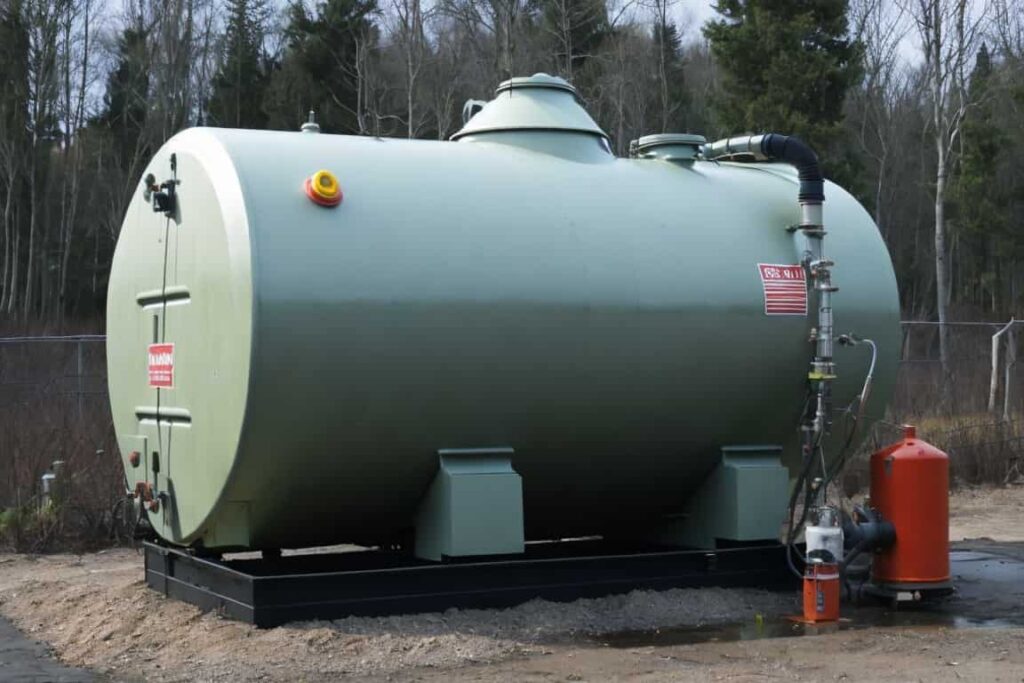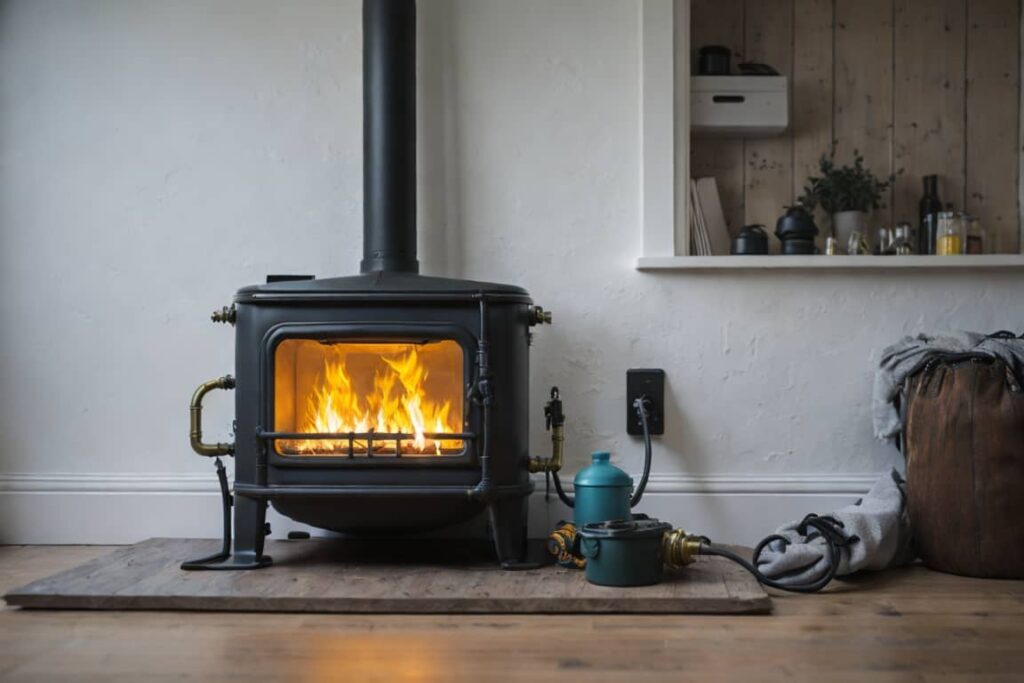Yes, it can be worth buying a house with oil heat. Oil furnaces are durable, efficient, and relatively inexpensive to purchase and install. Oil heat is also a good option for homes in remote areas that do not have access to natural gas. However, it is important to consider the potential downsides, such as fluctuating oil prices, increased maintenance requirements, and the flammability of oil.
Table of Contents
10 pros and cons of buying a house with oil heat
Pros of Oil Heating:
- Safety: Oil heating is considered safe because oil won’t burn unless it is inside the special heating furnace.
- Cost-effectiveness: Oil heat is often more affordable than other heating options, such as propane or electric-based systems.
- Efficiency: Heating oil burns 300 degrees hotter than natural gas, which means your home will heat faster, and you’ll need to burn less fuel to stay comfortable.
- Quick results: Heating your home with oil can lead to low energy bills and quick heating results.
- Availability: Heating oil is readily available in many areas, making it a convenient option for homeowners.
- Longevity: Oil heating systems can last for 30 years or more with proper maintenance, providing long-term value for homeowners.
- Independence: With oil heat, you are not dependent on a utility company for your heating needs, giving you more control over your energy source.
- Quiet operation: Oil heating systems are generally quieter than other types of heating systems, providing a more peaceful living environment.
- Customizable: You can choose from various oil heating system options, such as boilers or furnaces, to suit your home’s specific needs.
- Resale value: Some homebuyers may prefer oil heat, which could potentially increase the resale value of your home.
Cons of Oil Heating:
- Environmental impact: Oil heat is not as environmentally friendly as some other heating options, such as natural gas or electric-based systems.
- Maintenance: Oil heating systems require regular maintenance, including tank inspections, filter changes, and burner cleanings.
- Fuel storage: You’ll need to have a storage tank on your property to store the heating oil, which can take up space and require additional maintenance.
- Fluctuating fuel prices: The cost of heating oil can vary, so you may experience fluctuations in your heating costs over time.
- Limited availability: In some areas, heating oil may not be as readily available as other fuel sources, which could lead to potential supply issues.
- Odor: Oil heating systems can sometimes produce a noticeable odor, which may be a concern for some homeowners.
- Carbon emissions: Oil heat produces carbon emissions, contributing to air pollution and climate change.
- Risk of leaks: Oil storage tanks can develop leaks over time, which can be costly to repair and may pose environmental risks.
- Dependence on deliveries: You’ll need to monitor your oil levels and schedule deliveries to ensure you don’t run out of fuel.
- Inefficient for small homes: Oil heat may not be as cost-effective for smaller homes, as the initial investment and maintenance costs may outweigh the benefits.
Oil Heat Housing in USA: Prices and Insights
The price range for houses in the USA with oil heat varies based on factors such as location, size, age, and condition. While specific figures aren’t available, the following insights may help:
- Median Price in 2023: The median price of a home with oil heat is lower than the overall median sales price, as oil heat is generally considered to be a less desirable heating option than other types of heating, such as natural gas or electric heat. A study by the US Energy Information Administration reported a median price of $300,000 for homes with oil heat in 2023. This suggests a likely price range between $250,000 and $500,000.
- Heating Costs: The cost of heating with oil varies by location and oil prices. In Pennsylvania, for example, heating oil costs ranged from $2.85 to $3.00 per gallon. Actual heating expenses depend on factors like system efficiency and home insulation.
- Example from Haverford, PA: In 2023, average home heating costs in Haverford, PA, ranged from approximately $800 to over $2,500 per month during the coldest months. Specific costs depend on individual circumstances.
- Market Considerations: Oil heat is generally less favored than natural gas or electric heating, potentially impacting home prices. However, the influence on pricing varies based on local market conditions and available heating alternatives.
Keep in mind that house prices and heating costs can fluctuate significantly based on regional and individual factors. Accurate pricing information is best obtained through local real estate listings and heating cost assessments.
Costs involved when buying a house with oil heat

Upfront Costs:
- Cost of the oil heating system: Typically ranging from $2,000 to $7,000, depending on the type of furnace and house size.
- Cost of oil: The price of oil can fluctuate but is generally around $3.00 per gallon.
Ongoing Costs:
- Annual heating costs: Approximately $2,000 per year on average for a home with oil heat.
- Maintenance and repairs: Oil furnaces require regular maintenance, costing around $200-$300 annually. Tank inspection and cleaning can add another $100-$200 to these costs.
Additional Considerations:
- Cost of homeowners insurance: Homeowners insurance rates can be higher for homes with oil heat due to increased fire and hazard risks.
- Cost of environmental cleanup: In case of an oil tank leak, you may be responsible for the cost of cleaning up the spill, which can be significant if not detected and addressed promptly.
It’s important for potential homebuyers to factor in these costs when considering a house with oil heat, as they can significantly impact the overall expenses of homeownership. Additionally, conducting thorough inspections and maintenance can help mitigate some of these ongoing costs and potential risks associated with oil heating systems.
How Often Should You Service Your Oil Heating System?
- Annual Servicing: Schedule oil heating system maintenance at least once a year, ideally before the heating season begins. Heavily used systems or those in cold climates might require semi-annual servicing.
- Efficiency Boost: Regular maintenance enhances system efficiency, resulting in cost savings on heating bills.
- Preventing Breakdowns: Maintenance identifies and resolves potential issues before they lead to breakdowns, saving you both inconvenience and expenses.
- Longer Lifespan: A well-maintained oil heating system lasts longer, providing long-term cost benefits.
Signs for Service:
- Strange Noises: Unusual sounds from your furnace or boiler signal potential problems.
- Reduced Heat Output: If your system isn’t heating your home as effectively, it may need attention.
- Increased Bills: Rising heating bills without changes in usage may indicate issues.
- Starting Difficulty: Trouble starting the furnace or boiler is a red flag.
- Unusual Smells: Strange odors from your heating system should be addressed promptly.
Finding a Qualified Contractor:
- Seek recommendations from friends, family, or neighbors.
- Obtain quotes from multiple contractors for comparison.
- Ensure the contractor is licensed and properly insured.
- Inquire about the contractor’s experience with oil heating systems.
Regular servicing not only ensures efficient and safe operation but also extends the lifespan of your oil heating system, providing long-term value.
How much does it typically cost to service an oil furnace?
Estimated Costs for Oil Furnace Servicing:
Maintenance Visit:
- Price Range: $250 to $500
- Includes a comprehensive tune-up, part replacement, and system restoration. May be included when purchasing an oil furnace from a reputable company.
Cleaning of Furnace:
- Average Cost: $100 to $200
- Cost varies based on the furnace’s condition, size, and accessibility.
Furnace Inspection:
- Average Cost: $100 to $200
- Cost varies based on the furnace’s condition, size, and accessibility.
Furnace Repair:
- Price Range: $300 to $1,200
- Repair costs vary depending on the specific issue. Costs can be comparable to gas furnace repairs due to similar components.
Ductwork Modifications and Labor:
- Cost includes labor for ductwork modifications and removal of the old system if installing a new oil tank.
- Specific costs depend on installation complexity and local labor rates.
Actual prices may differ, so it’s advisable to contact a trusted HVAC professional in your area for accurate quotes on servicing your oil furnace.
Common issues with oil heating systems and their solutions
1. Clogged Filters:
- Issue: Dust and debris in air filters reduce efficiency.
- Solution: Regularly clean/replace air filters for proper airflow, ensuring heating system efficiency.
2. Malfunctioning Thermostats:
- Issue: Faulty thermostats affect the heating system.
- Solution: Check settings and replace batteries; consider thermostat replacement if issues persist.
3. No Flames or Low Flame:
- Issue: Lack of flames or low flame results from various causes.
- Solution: Consult a technician to diagnose and resolve problems like clogged nozzles, insufficient air supply, or faulty fuel pumps.
4. Insufficient Heat :
- Issue: System provides inadequate heating.
- Solution: Confirm fuel supply, thermostat settings, and air filters. If issues persist, seek professional inspection and repair.
5. High Fuel Consumption:
- Issue: Excessive fuel use signals inefficiency.
- Solution: Enhance fuel efficiency with regular maintenance, including burner cleaning and addressing air leaks.
6. Odd Noises:
- Issue: Unusual noises indicate system problems.
- Solution: Contact a technician for diagnosis and resolution, which may involve a clogged burner, loose parts, or a malfunctioning fuel pump.
7. Oil Boiler Not Starting:
- Issue: Oil boiler fails to start.
- Solution: Check fuel supply, thermostat settings, and electrical connections. If problems persist, consult a technician for ignition system or fuel pump issues.
8. Oil Boiler Not Firing Up for Heating:
- Issue: Oil boiler doesn’t start when heating is required.
- Solution: Confirm thermostat settings, bleed the fuel line to remove air, or consult a technician for thermostat, fuel line, or fuel pump issues.
9. Oil Boiler Keeps Turning Off on Its Own:
- Issue: Oil boiler shuts off unexpectedly.
- Solution: Inspect fuel supply, thermostat settings, and electrical connections. For persistent problems, consult a technician to address flame sensor or fuel pump issues.
Regular maintenance and professional inspections prevent these issues, ensuring efficient oil heating system operation.
Comparison of oil heat vs other heating options
| Heating Option | Average Annual Cost in 2023 | Factors Affecting Cost |
|---|---|---|
| Oil Heat | $2,000 | Price of oil, age and efficiency of heating system, size of home, climate |
| Natural Gas Heat | $1,700 | Price of natural gas, age and efficiency of heating system, size of home, climate |
| Electric Heat | $2,500 | Price of electricity, age and efficiency of heating system, size of home, climate |
Overall Findings:
- Oil heat is generally costlier than natural gas but less expensive than electric heat.
- All options’ costs can fluctuate due to fuel prices and other factors.
Maintenance and Repairs:
- Oil furnaces require more maintenance, increasing ownership costs.
Environmental Impact:
- Oil and natural gas are fossil fuels, contributing to greenhouse gas emissions.
- Electric heat is the most environmentally friendly, producing no on-site emissions.
Government Incentives:
- Government incentives exist for switching to energy-efficient systems, potentially offsetting conversion costs.
- Government incentives, including federal tax credits and state rebates, promote energy-efficient heating systems adoption. The federal tax credit covers 25% of costs for qualified improvements, with caps of $1,000 for heat pumps and $500 for solar water heaters. Costs vary by system type, typically ranging from $3,000 to $20,000. Research available incentives for affordability.
Availability:
- Oil heat availability varies by region; not all areas have access.
- In some areas, oil heat might be the only option if natural gas isn’t available.
Conclusion:
- To compare costs effectively, obtain quotes from multiple heating contractors.
- Contractors can evaluate your needs and estimate installation and operational costs for different heating systems.
This summary provides a clear overview of the factors influencing heating costs, environmental impact, and considerations for choosing the right heating option for your specific situation.
Maintenance Tips for Home Oil Furnace

Monitor Oil Levels:
- Regularly check the oil tank’s level.
- Schedule fuel deliveries to avoid system malfunctions due to fuel depletion.
Air Filter Care:
- Clean or replace air filters regularly.
- Maintain proper airflow and prevent debris buildup.
Clear Surroundings:
- Keep the furnace area free of clutter, debris, and flammable materials.
- Ensure proper ventilation and reduce fire hazards.
Visual Inspection:
- Routinely inspect the furnace for physical damage like rust, dents, or wear.
- Seek professional evaluation and repairs if issues are detected.
Remove Soot and Debris:
- During maintenance, clean carbon soot and debris from the system.
- Use a vacuum to eliminate dust around furnace components.
Burner and Blower Adjustment:
- Check burner and blower assembly alignment.
- Correct misalignments to improve efficiency.
Flame Observation:
- Monitor the flame color; a steady, blue flame indicates proper combustion.
- Yellow or flickering flames may signal burner issues; seek professional assistance.
Flue Pipe Inspection:
- Examine the flue pipe for damage or blockage.
- Address problems promptly to maintain efficiency and safety.
Professional Maintenance:
- Schedule annual professional maintenance.
- Trained technicians perform thorough inspections, cleaning, and tune-ups for optimal performance and issue resolution.
How has the cost of oil heat changed over the past decade
- 2010: Beginning the year at approximately $3.45 per gallon.
- 2013: The average residential heating oil price in the US was $3.85 per gallon.
- 2014: Average residential heating oil price dropped to $3.63 per gallon.
- 2015: Further decline to $2.72 per gallon.
- 2016: Decreased to $2.41 per gallon.
- 2017: Increased to $2.68 per gallon.
- 2018: Rose to $3.07 per gallon.
- 2019: Averaged $2.92 per gallon.
- 2020: Dropped to $2.55 per gallon.
- 2021: Increased to $3.13 per gallon.
- 2022: Reached a record high of $5.90 per gallon in November.
- 2023: As of May 8, 2023, the current price is $2.21 per gallon.
These fluctuations underscore the oil heat market’s volatility and its potential impact on homeowners’ heating expenses. When considering heating options, it’s crucial to factor in such market dynamics.
Conclusion
In conclusion, Yes, it’s worth buying a house with oil heat as it can be a cost-effective and efficient choice for many homeowners depending on your budget, particularly in areas without natural gas access. Oil heating systems offer durability and customizable options, potentially increasing a home’s resale value. However, it’s vital to consider factors like fluctuating fuel prices, maintenance requirements, and environmental impact. Prospective buyers should carefully assess their specific needs, local market conditions, and long-term budget to determine if purchasing a house with oil heat aligns with their priorities and preferences.
